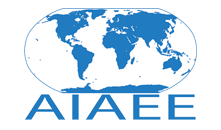Keywords
entrepreneurship education; opportunity recognition; photovoice; resource constraints; youth
Abstract
Interest in entrepreneurship education by scholars and practitioners as a way to overcome poverty is growing. Yet little is known about how entrepreneurship can be a successful approach to achieving prosperity in resource-poor conditions. Entrepreneurship has been mainly associated with the view of entrepreneurs as super humans capable of solving all problems, especially if operating in resource-rich contexts. This qualitative study’s purpose was to explore, through photovoice methodology, the entrepreneurial opportunities involving agribusiness and ecotourism that Nicaraguan students recognized in their communities. Photovoice allowed the researchers to gain in-depth information from students who expressed in images what may have been difficult to explain in words. The students recognized different opportunities linked to their contexts as expressed through photos documenting local assets and materials. The study participants also indicated interests in doing social good, which suggested a more societally oriented view of entrepreneurship. The poor, including youth often marginalized, were able to recognize business opportunities in concert with their economic conditions. Opportunity recognition may be one of the more promising ways to overcome poverty. Its facilitation holds implications for agricultural, tourism, and rural development curricula and educational programming.
Rights Statements
This Item is protected by copyright and/or related rights. You are free to use this Item in any way that is permitted by the copyright and related rights legislation that applies to your use. For other uses you need to obtain permission from the rights-holder(s).
Recommended Citation
Uscanga, J. M.,
Edwards, C. M.,
&
Watters, C. E.
(2019).
What did Aspiring Young Entrepreneurs in Nicaragua Recognize as Agribusiness and Ecotourism Opportunities using Photovoice as a Data Collection Tool?.
Journal of International Agricultural and Extension Education, 26(2), 29-47.
DOI: https://doi.org/10.5191/jiaee.2019.26203



